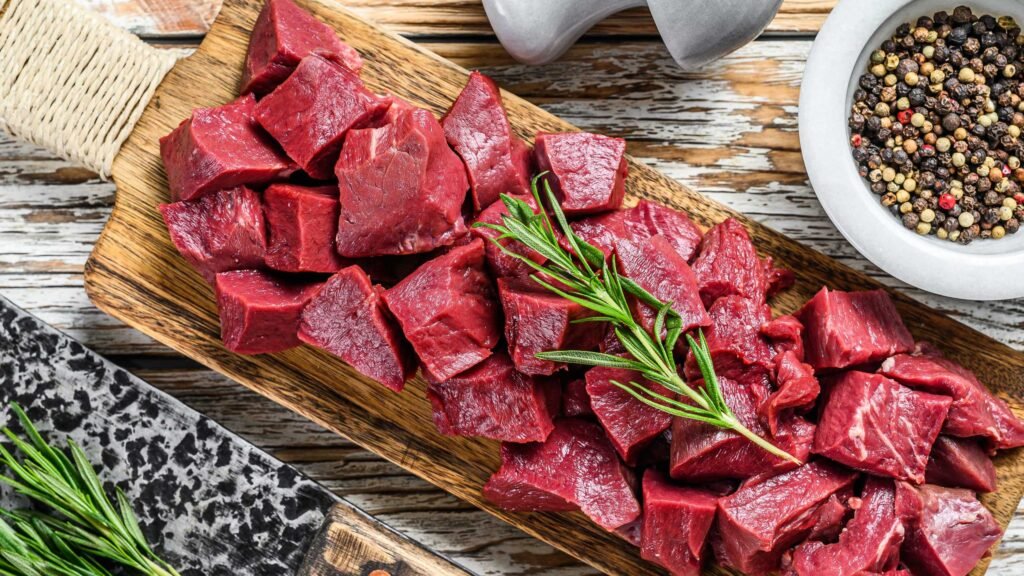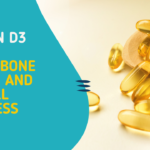Internal organs, known as organ meats or offal, are slowly making their way to the mainstream as everyone learns about their nutritional benefits. From the liver to the heart and kidneys, so many people overlook these cuts of meat, yet they are rich in nutrients and much cheaper than the usual muscle meat.
Remarkably, a 3-ounce serving of beef liver contains 612% of the daily recommended intake of Vitamin A. This nutrient is essential for proper vision, immunity, and healthy skin. Organs from grass-fed animals are exceptionally healthy since they contain increased omega-3 and antioxidants.
Nutrition Facts about the Organ Meats

Offal foods are very rich in nutrient content, sometimes even more so than muscle meats in terms of nutrient densities. They contain boost nutrients to the body in the form of vitamin A, Iron, and vitamin B12, which facilitate immunity, oxygen carrying, and energy metabolizing bodies, respectively.
Loaded with Vitamins and Minerals
Offal has remained an excellent food source and is even richer in some nutrients than muscles. A 100-gram serving of liver contains up to 300 % of the recommended daily intake of Vitamin A, which enhances immunity and vision. The liver, an organ meat, is also among iron-rich foods.
Rich in B Vitamins for Energy
Internal organs like the heart and the kidneys contain lots of B vitamins, including vitamin B12 and riboflavin, which play a great role in generating energy in the body and improving brain function. Beef heart, per 100 gm, has more than 50 percent of the requirement of the B12 vitamin, which is very useful for increasing energy and feeling good.
Health Perks Linked with Particular Organs
The primary product choice often includes organ meats such as liver, heart, and kidney, all nutritious, each with its benefits. But these organs are full of vitamins, minerals and proteins, which can significantly improve your health. Now, let’s discuss why these somewhat vague and underrated organs of the animal are worth earning their place on your plate!
Liver
Nutrients are concentrated in the liver and can be rightfully attributed to the list of organotrophic nutrients. It’s a natural superfood because only one ounce of grass-fed beef liver contains over 700 per cent of what you need daily of vitamin A! This organ meat also contains 5.6 mg per 100 g of iron, making it an excellent food for increasing energy intensity and red blood cell count.
Heart
Don’t be afraid of the word ‘heart’ when it comes to the food – it is an incredible cut of meat! The beef heart contains CoQ10, a natural antioxidant that assists in heart function, including valves and cellular energy. Moreover, consuming 3 oz of beef heart will consume almost 10 grams of protein.
Kidney
Beef kidney is ideal; it becomes even better if you struggle with histamine intolerance. It contains a relatively rich supply of diamine oxidase (DAO), an enzyme that assists in the digestion of food substances containing histamine. The 100-gram serving size contains 14 grams of protein and nutrient B12.
Why Grass-Fed Matters
Grass-fed organ meat is a good source of vitamins and minerals and is nutritionally better than organ meats that feed on grains.
Grass-fed organs offer better solutions and a higher concentration of omega-3 fatty acids but are lower in inflammatory omega-6. In addition, they are rebuilt, as this producer supports eco-friendly farming.
Nutrient superior
When it comes to organ meat and seafood, grass-fed is the best choice. Compared with grain-fed animals, grass-fed organs contain three times more vitamin E, which boosts the immune system, and up to 50 per cent more omega three fatty acids, which relieve inflammation and are beneficial for brain tissue.
Lesser Omega-6 for improved health
Grass-fed organ meats are also lower in dangerous omega-6 fatty acids, which contribute to inflammation when consumed in large amounts. Reports indicate that a high amount of omega-6 causes chronic diseases such as heart illnesses. So, by opting for grass-fed organs, you’re lowering your risk yet preserving all the upside of nutrient-dense offal.
Physical, environmental, and ethical advantages
Grass-fed farming offers health benefits and environmental improvements. Grass-fed cattle generate little methane, and grazing systems use up to 30 per cent less water than feedlot finishing systems.
Health Risks and Implications
However, it has been established that organ meats are rich in nutrients. There are still a few things to consider. For example, the liver has 565mg of cholesterol per 100 ml, which is higher than other meat types. If you are watching your cholesterol, it may be wise to avoid it, especially if you are a high-risk patient for heart disease.
The second factor is vitamin A toxicity. The liver provides 3,460% of the daily requirement of vitamin A per 100 gm, so it should be taken in moderate proportions, especially for pregnant women and children. The liver, for example, is an organ that can store toxins and heavy metals in the body.
Essential Points to Consider:
- Cholesterol: The liver contains 565 mg per 100 grams, much higher than muscle meats.
- Vitamin A Overload: 3,460% of the daily dose; should be taken in moderation.
- Toxins: When feeding your animals, choose grass-fed products to minimize the contaminants by half.
Incorporate Organ Meat into your Diet
Internal organs, also known as offal, have been associated with increased nutritional values. For most, the preparation or even the idea of preparing and eating them seems quite a task.
Fortunately, including these high-nutrient foods in your diet does not have to be very complicated. Alright, let’s look at ways you can prepare organ meats and eat them regardless of how new you are to organ meat consumption.
- Start with Familiar Organ Meats
Heart meat is easily recognizable as ground beef and is well suited for burgers or meatballs. Yes, you may add up to 20% liver to the ground meat, and it will not affect the flavour of the food much.
The tongue and heart have milder tastes than the liver, so they’re easier to include, and slowly increasing the amount helps your taste buds get used to them.
- Gradually Increase Organ Meat Intake
Organ meats should be introduced gradually for suppers, stews, or soups.
It is recommended to add 50 grams of liver or kidney to stews or stir-fries to slowly incorporate organ meats into your diet. They are both packed with iron and vitamin B12.
You can enjoy the health benefits in greater quantity without overpowering the flavour buds. Another handy product is the desiccated organ meat capsules, which contain 1000mg per capsule—the equivalent of a tiny portion of the liver—for those who do not have the time or desire to cook.
- The Nutritional Power of Organ Meats
A 100 gm liver contains more than 130% of the vitamin A required daily and 80% of the necessary iron. Muscle meat, especially heart meat, has CoQ10, which aids in heart health and helps in energy production.
The kidney provides diamine oxidase (DAO) to metabolize histamine and is a good source of selenium, an immune-boosting nutrient. Such organs have significant health impacts on the body of a human being.
- Simple Ways to Take In Organ Meats
Adding organ meats is simple: raw liver or heart can be roasted and combined with ground beef or pork. Pulse at 10-20% in dishes such as meatloaf or chilli to weaken the rich flavours and allow the nutrients to be absorbed simultaneously.
Ready-to-cook products such as liver pâtés or organ meat sausages are also included and easy to find. These products encompass the health aspect of organ meats but do not require elaborate preparation.
- Supplementing with Organ Meats
There is a desiccated organ supplement version for those who are not comfortable with supplements in the form of organ meats. A 1000mg liver capsule contains about 48% of your daily requirement of vitamin B12, and it does not require the preparation of raw liver or organ meats.
Final Words:
When you include organ meats in your meals, they offer a nutrient-dense package. The liver is undoubtedly the new ”superfood.” A 100-gram serving of liver contains over 700% of vitamin A. Renal iron, hepatic fibre, microbial agglutination, and cardiac coenzyme Q10 are examples of the promises of specific organs.
Remember, moderation is key. However, it will help if you can balance your intake of these nutrient-dense foods as you enjoy them. Indeed, fresh grass-fed organ meats are healthier than their Grain-Fed counterparts, and this idea should excite people willing to discover this aspect of food nutrition.


